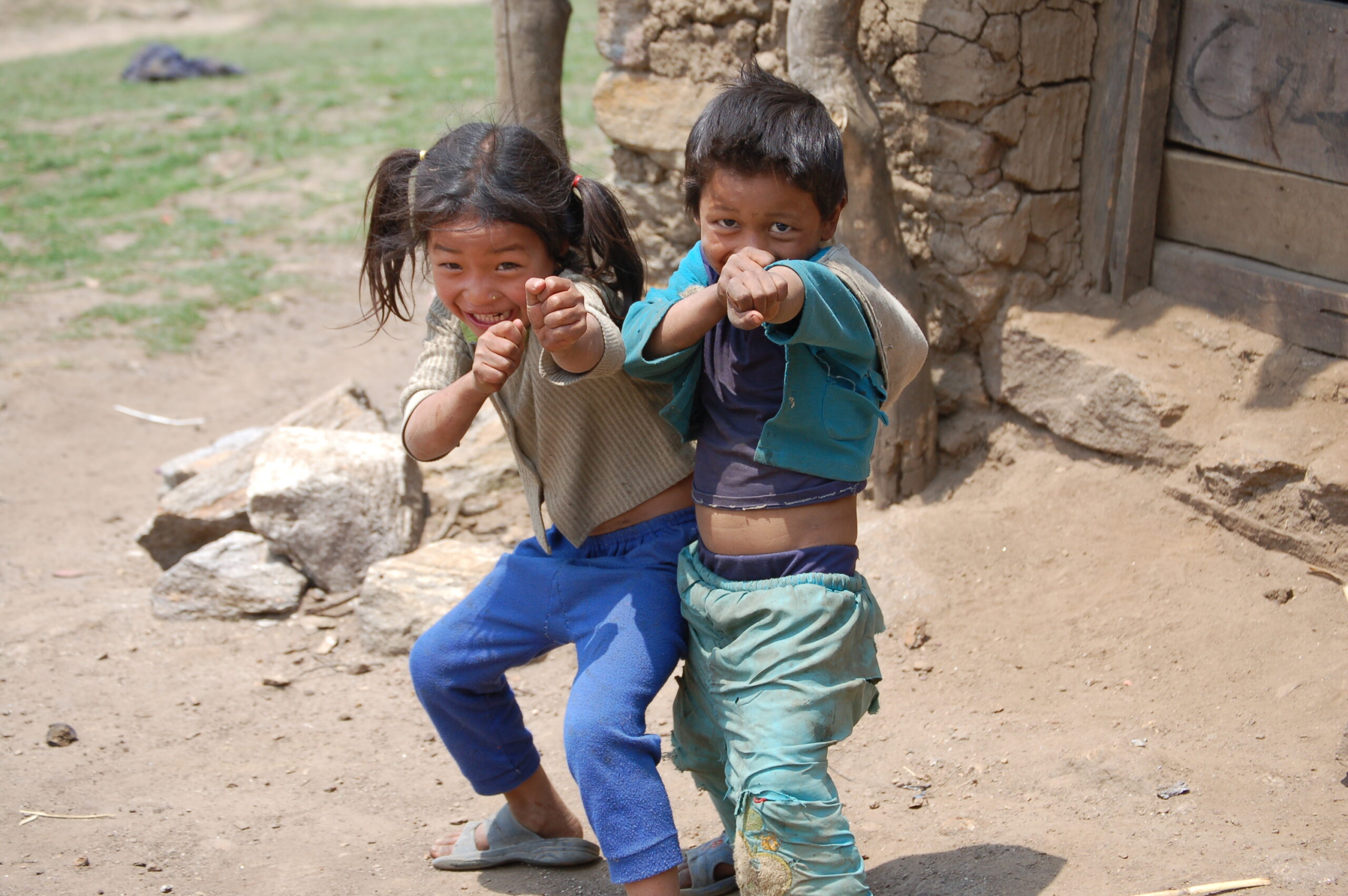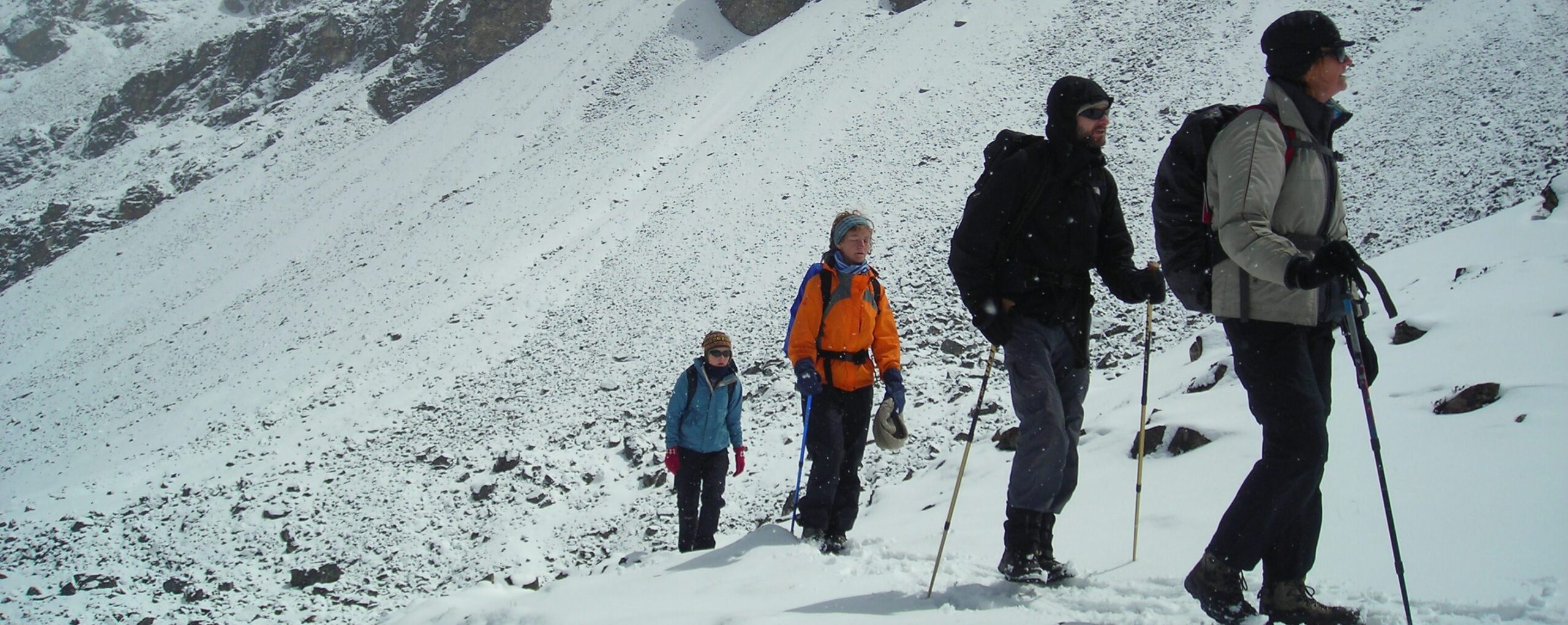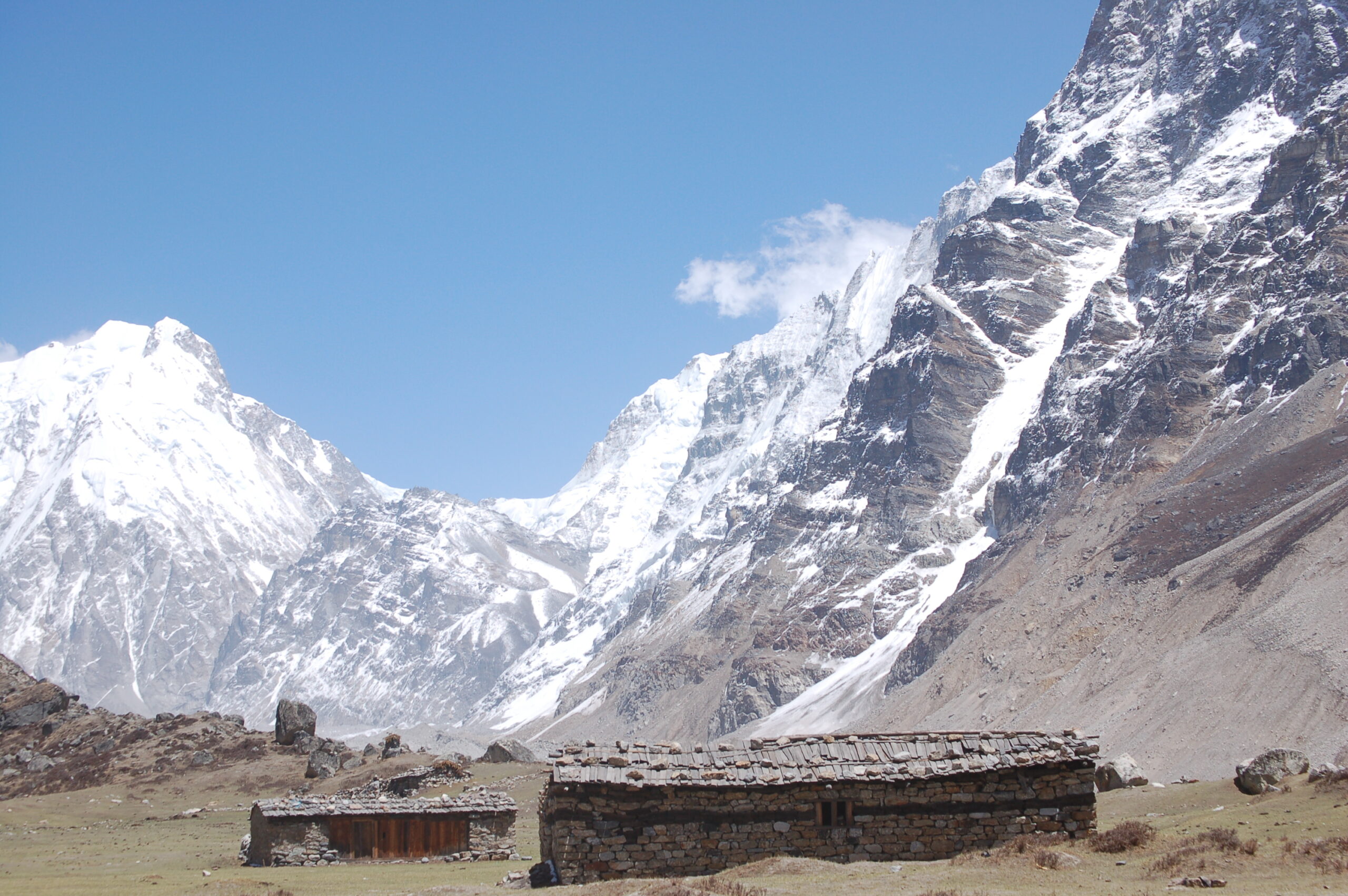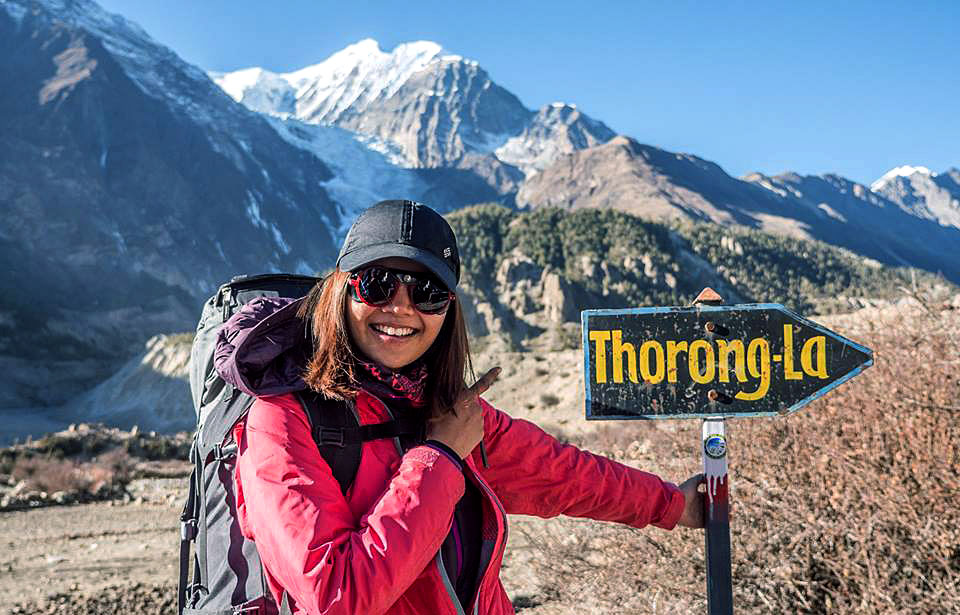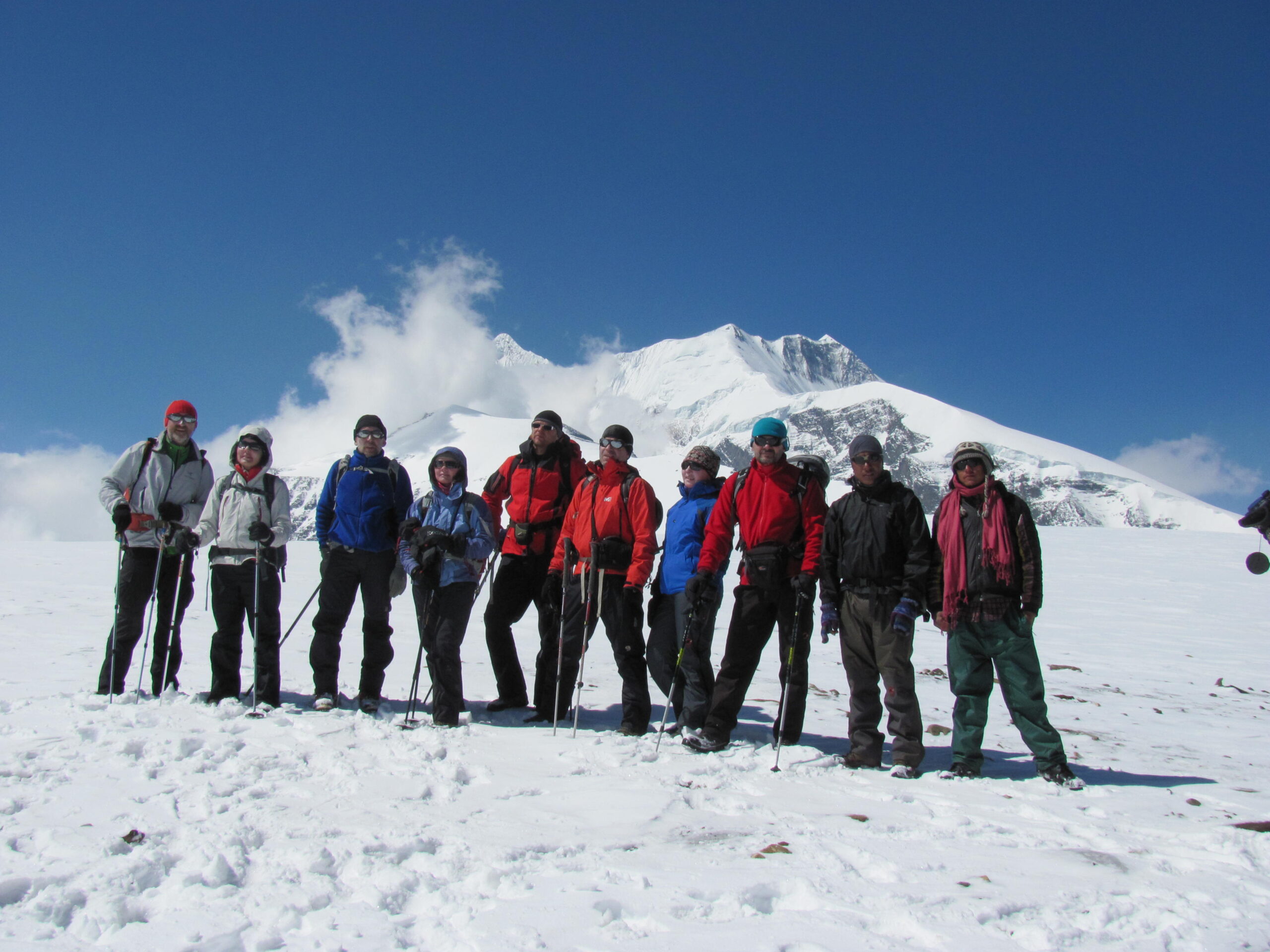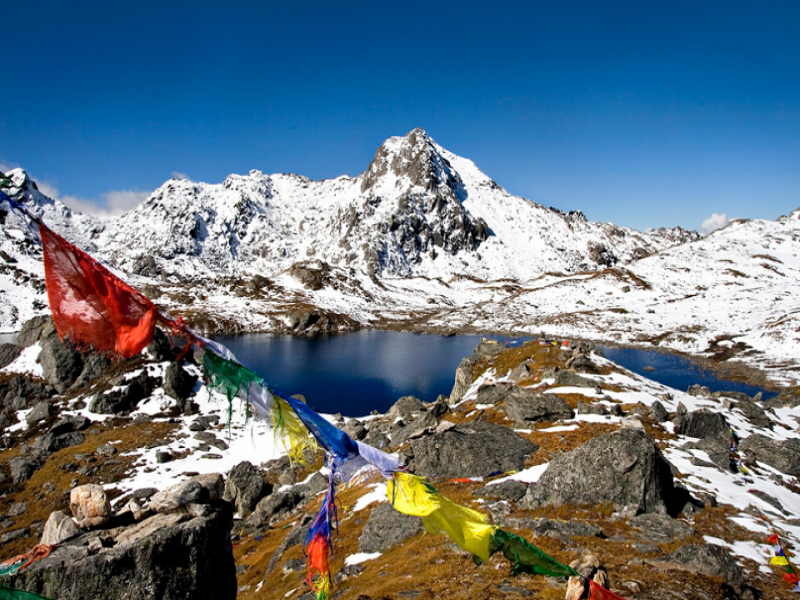Highlights
Join Us on an once-in-a-lifetime adventure as we delve into the enchanting world of Kanchenjunga Trekking. Nestled in the heart of the Himalayas, this awe-inspiring trek offers unparalleled natural beauty, rich cultural experiences, and adrenaline-pumping challenges. Join us as we uncover the secrets of this extraordinary destination, from its towering peaks to its hidden valleys. Prepare to be captivated by the allure of Kanchenjunga Trekking, where every step unveils a new wonder. Traverse through pristine forests, cross crystal-clear rivers, and witness breathtaking vistas of snow-capped peaks. This comprehensive guide will take you through the highlights of this remarkable journey, ensuring an unforgettable experience from start to finish. Kanchenjunga trek requires careful planning and preparation. From obtaining permits to selecting the right gear, here’s everything you need to know before setting off on your adventure. Before embarking on your Kanchenjunga trekking adventure, it’s essential to obtain the necessary permits. These permits not only ensure your safety but also contribute to the conservation efforts of the region. Make sure to acquire the required permits well in advance to avoid any last-minute hassles.The timing of your Kanchenjunga trek can significantly impact your experience. Discover the best seasons to embark on this epic adventure and make the most of your journey through the Himalayan wilderness with Clear Sky Treks Team . Experience the magic of spring as vibrant rhododendrons blanket the hillsides in a riot of colors. The months from March to May offer pleasant weather and blooming flora, making it an ideal time for trekking enthusiasts to explore Kanchenjunga. Kanchenjunga offers a variety of trekking routes, each with its own unique charm and challenges. Whether you’re a seasoned trekker or a novice adventurer, there’s a trail suited to your preferences and abilities.Embark on the classic Kanchenjunga Circuit, a legendary trail that circumnavigates the entire massif. This challenging route promises awe-inspiring views, remote villages, and encounters with diverse cultures. Proper acclimatization is crucial when trekking at high altitudes. Take your time to acclimatize to the altitude by ascending gradually and allowing your body to adjust to the reduced oxygen levels. Kanchenjunga trekking, where every step is a journey of discovery and every moment is filled with awe-inspiring beauty. Whether you’re drawn to the towering peaks, the rich cultural heritage, or the abundant wildlife, this Himalayan gem promises an unforgettable experience that will stay with you long after the journey ends.
Essential Gear: Packing the right gear is essential for a successful and enjoyable trekking experience in Kanchenjunga. From sturdy hiking boots to lightweight layers, here’s a comprehensive list of gear you’ll need to conquer the Himalayan trails. Footwear: Invest in a pair of high-quality hiking boots that provide ample support and traction on varied terrain. Opt for waterproof and breathable options to keep your feet dry and comfortable throughout the trek. Safety Tips: Safety should always be a top priority when embarking on any trekking adventure, especially in remote and challenging environments like Kanchenjunga. Follow these essential safety tips to ensure a safe and memorable journey. Cultural Encounters: One of the highlights of Kanchenjunga trekking is the opportunity to immerse yourself in the rich cultural heritage of the Himalayan region. From traditional Sherpa villages to ancient monasteries, each day brings new encounters with local customs and traditions. Experience the legendary hospitality of the Sherpa people as you trek through their picturesque villages. Immerse yourself in their vibrant culture, sample traditional cuisine, and gain insight into their way of life.The pristine wilderness of Kanchenjunga is home to a diverse array of flora and fauna, making it a paradise for nature enthusiasts and wildlife lovers alike. Keep your eyes peeled for rare Himalayan species as you explore this untamed wilderness. Spot elusive wildlife species such as the snow leopard, red panda, and Himalayan black bear in their natural habitat. With luck and patience, you may catch a glimpse of these majestic creatures against the backdrop of snow-capped peaks.
Itenary
Duration: 25 Days
Max Altitude: 5280m
Difficulty: Hard
Cost: USD $2250.00 to USD $2950.00
Country: Nepal
Activity: Trekking in Nepal
Starting Point: Kathmandu
Ending Point: Kathmandu
-
1: Kathmandu arrival (1300m) BB
Welcome to Kathmandu, the capital city of the Himalayan kingdom of Nepal. You will be met on airport and transferred to your hotel. After the arrival, the group will be formally introduced to Guide for the activities over the next few days. One should pay attention in particular to the safety aspects of the briefing. Any questions or doubts should be asked and clarified at this time. We check your insurance details and other requirement for your trekking.
-
2: Permit & Trekking preparation Day where you can do Kathmandu sightseeing Tour
After breakfast, we start an interesting tour around Kathmandu. Escorting by an English speaking guide (can be provide any language speaking guide on request) be, try to give them a full taste of our vivid culture image and an enchanting manner of its people. In our sightseeing tour we go to Monkey temple Swayambhunath, Pashupatinath and Kathmandu Durbar square.
Durbar Square: –This complex of palaces, courtyards and temples, built between the 12th and 18th centuries, used to be the seat of the ancient Malla kings of Kathmandu. An intriguing piece here is the 17th century stone inscription set into the wall of the palace with writings in 15 languages. The Durbar square, protected as an UNESCO world Heritage site, is the social, religious and urban focal point of the city. There are also museums inside the palace building. There is an entrance fee of Rs.250 for foreign visitors. Your ticket to the Square entitles you to visit all the museums.
Swayambhunath, 6.5 kilometers west of Kathmandu, situated on a hillock, this 2000 years old Stupa is the world’s most glorious Buddhist shrine and is surrounded by several small pagodas. The main temple is capped by a pinnacle of copper gilt and is painted on the four sides with all seeing eyes of Lord Buddha.
Pashupatinath, dedicated to Lord Shiva, is the holiest and most famous Nepalese temple. Situated 5 kilometers northeast of Kathmandu on the bank of the sacred Bagmati River, it is an impressive pagoda style structure with gilt roof and richly carved silver doors. It has bathing and cremation ghats, which are of absorbing interest to the tourist, particularly in the mornings and on festival days
-
3: Fly to Suketar (Taplejung) then trek to Jogidanda (2059m/ 4 hrs) BLD
After breakfast at the hotel, we take a flight to Suketar (35 min). From the airport in Suketar, the trail inclines gradually along the rhododendron covered Surke Danda, crossing a ridge at 2580m the trail branches from here, the Kanchenjunga trail descends and contours through forests to Jogidanda crossing Limbu Village near jogidanda Jogidanda our first camping sight of our trek.
-
4: Jogidanda- Chirwa (1800m/7 hrs.) BLD
Trek to Chirwa(1171m.) and it takes about seven hours. The path to follow is quite narrow and passes through jungle mainly covered with cardamom plants and other vegetation. You can also see the small gardens of orange on your way. You cross through some small streams while trekking. This day your trek is through ascent and descent paths. You walk along the more flat land. Chirwa is a small town where you find small lodges and camping site with local shops. The people are mainly engaged in agricultural activities.
-
5: Chirwa - Sakathum (1660m)/6hrs.) BLD
Trek from Chirwa to Sekathum(1635m.) which takes about six hours. Your trek passes through a small jungle along with the bank of river. You find the plants of cardamom and other different vegetation. The trail normally ascends and descends as well. You cross a small hanging bridge before you reach Sekhathum. You spend overnight.
-
6: Sakathum - Amjilosa (2510m.5 hrs.) BLD
Trek from Sekathum to Amjilosa ( 2510m.) and it takes about five hours. The first one and half-hour you trek through normally flat land. Then your trail goes steeply ascent up to Amjilasa. Amjilassa is small village with few houses and yak herds with local shops where you find minimal supplies. These shops are also called Bhattis and teashops.
-
7: Amjilassa - Kyapar (2730m/ 7 hrs. ) BLD
Trek from Amjilosa to Kyapar ( 2730m.) which takes about seven hours. The trail is quite flat in the beginning and gently ascent to Gyable passing through jungle. There can be seen human settlement at Gyable. People living here follow Buddhist culture. You stay overnight
-
8: Kyapar - Ghunsa (3695m/ 6 hrs.) BLD
Trek to Ghunsa (3468m.) which takes about six hours. Your trails pass through jungle. You can see Gunsa river down the trail. The trail passes through few human settlements and it is clearly visible that their life style and culture has been inherited from Tibet. You pass through terrace fields where are grown potato, wheat, barley, buck wheat and so on. The local trader are involved in export-import business in Tibet. The traders go to India for trade activities during the winter season.
-
9: Ghunsa - Khambachen (4099m/ 6 hrs.) BLD
Trek from Ghunsa to Kambachen (4124m.) which takes about six and half hours.
The trail makes a gradual ascent along the south bank of the Gunsa Khola, then crosses a boulder strewn flood plain and crosses back to Rambuk Kharka on the north side of the river. Once on the opposite side, the trail passes a waterfall then makes a short, steep ascent to a very unstable scree slope. It’s a passage across the slide, with loose footing, a steep fall to the river and lots of tumbling football-sized rocks. Beyond the slide, the trail drops to the single locked hut at Lakep, then traverses to Khambachen, a Tibetan settlement of about a dozen houses at 4040m -
10: Rest Day BLD
Khambachen (4099m) It is again time to stop and acclimatize. There are view of the high peaks near Kanchenjunga , Khabour, Phole, Nango Ma and Jannu. Climb a ridge above the village for more views or take a day hike to the Jannu base camp.
-
11: Khambachen - Lhonak (4785m/5hrs.) BLD
The trail climbs gradually through open tocky fields to Ramtang, 4240 metres, then across moraines northwest of the Kanchenjunga Glacier. Lhonak 4790 metres is near dry lake bed on an open sandy plain. Terrific mountain views abound in all directions.
-
12: Lonak - Pangpema (5143m/ 5 hrs.) BLD
You can not see the main Kanchenjunga peak from Lhonak, for a view of this peak you must go on to the base camp at Pang Pema, 5140 meters. The spectacular main peak of Kanchenjunga and a panorama of other peaks that make up one of the largest mountain in the world tower over the single roofless hut at Pang Pema
-
13: Pangpema (5243m/7 hrs.) Hike to Base camp 5280m BLD
Trek from Pangpema to Kanchanjunga (North) Base Camp (5280m.) and trek back to Pangpema and it takes approximately eight hours. The trek goes upward until you reach Base Camp. Here you can enjoy the snow capped mountains and Kanchenjunga glacier. There are gorges of mountain glacier where water flows all the time. During the middle of the day, the scene of falling avalanches captivates you completely. While trekking back you climb down till Pangpema. On the way you can see yaks and mountains grazing in the pastures.
-
14: Pangpema - Khanbachen (4040m/5hrs.) BLD
Take a morning hike up to the ridge north of Pang Pema. A climb of 200 to 300 meters provides a vantage point with views of Kanchenjunga, Wedge Peak, the Twins, Pyramid Peak and Tent Peak. As usual, the descent goes faster, you can easily get back to Khambachen in a single day.
-
15: Khangpachen -Lumba Samba (4206m/ 7 hrs) BLD
We select to cross either of the 2 passes today depending on the weather conditions: Lapsang La, the higher pass at 5180m or the Mirgin La at (4500m) .
-
16: Lumba Samba - Ramche (4580m/ 7 hrs.) BLD
Trek to Ramche [4360m) and it takes about seven hours. You have a short walk today to your next camp at Ramche. The scenery is magnificent as you ascend past the snout of the Yalung Glacier and into a series of ablation valleys. A frozen lake, crystal clear streams and views of Kokthan, Rathong and Kabru are the highlights of this walk into Ramche which is situated on a broad, flat ablation zone.
-
17: Ramche (4580m) Explore the South Base Camp 5 hrs. BLD
Explore around South base camp. Ramche for Exploration and walk approximately for 5 to 6 hours. Leaving your camp set up at Ramche, you take a packed lunch and set off very early for your first close encounter with Kanchenjunga. Following the valley around its sweeping curve, you are suddenly confronted with the vast southern wall of the mountain. The ridge forms a cirque, which is over 15 kms long and never less than 7500 metres high. Along this ridge lie the three main summits of Mt Kanchenjunga at 8420m, 8586m, and 8474m. It is truly breathtaking. Proceeding further on towards Oktang [4630m], you may then descend onto the glacier and cross it to a point below Talu from where you can see all the mountains of the area in panorama. Especially impressive is the east part of Khumbakarna Glacier flowing from the east face of Jannu [Kumbhakarna being the local name for Jannu]. You then return to your camp at Ramche.
-
18: Ramche - Cheram (3870m/ 7 hrs.) BLD
Trek from Tseram (3725m.) and it takes about seven hours. You trek through almost desert like area and some places you cross is stony trail. The path is ascent from Mirgin La to Tseram. On the path, you can see Lapsang La glacier,Mirgin La glacier and snow-capped mountains. There are very few stone roof houses at Tseram and yak huts. You stay overnight.
-
19: Cheram - Tortong (2995m/ 5 hrs.) BLD
The hike starts in forest, then crosses landslides to Tsento Kang, a goth at 3360 meters. An hour beyond is a Buddhist Shrine. Peaks begin to appear in the distance as you climb further.
-
20: Tortong - Yamphudin (2080m/ 8-9 hrs) BLD
Trek to Yamphudin (2090m.) which takes about 8 to 9 hours. The first part of the trekking goes along the bank of the river, Simbua Khola. You have to walk through jungle. On the way, you can see the landslide at some places. The trails normally ascends up to Lamite Bhanjyang and then descends to Yamphudin crossing the small river. Yamphudin is a mixed community of Sherpas, Limbus, Rais and Gurungs. Among the corn and rice fields of the village there are a school and some shops with minimal supplies.
-
21: Yamphudin - Anpan (2040m/ 6-7 hrs.) BLD
Trek from Yamphudin to Anpan (1740m.) which takes about 6 to 7 hours. In the beginning, you descend crossing the Omje Khola up to halfway. Now you ascend through the jungle of cardamom and orchid plants. You pass a small village where you can find different human settlements, small thatched roof houses and local shops with minimal supplies. From here, the trails is quite ascent up to Khebang Danda and then you trek in descending order to Khebang village. Khabang is comparatively big village where is found the people following religion of Hindu and Buddhism.
-
22: Anpan - Tembewa Height (2000m/ 6 hrs) BLD
It will take 6 hours to Tembewa from Anpan. the route is so scenic and many up ans down hills in low altitude.
-
23: Tembewa - Taplejung or Suketar (1780m-2300m/ 6 hrs.) BLD
-
24: Taplejung or Suketar - KTM flight (1300m) BLD
Taplejung or Suketar – KTM (1300m) After breakfast at the lodge of Suketar we go to the airport to fly to Biratnagar and then from there we connect flight to Kathmandu. Arrive Kathmandu and then transfer to the hotel.
In the evening we will drive you for farewell dinner with cultural dance.
-
25: Final Departure.
All too soon it’s time to bid Nepal farewell and one realizes that we can never be intimate, only acquainted with this amazing adventure kingdom
Tour Accomodation
What's Included
- Welcome in Airport by garland
- Airport Pick up & Drop Transportation by private vehicle
- Twin sharing accommodation at Kathmandu in 3 star hotels with breakfast
- Kathmandu /Taplejung /Kathmandu Flight Fare
- sightseeing in Kathmandu Escorted with English Speaking Guide & Entrance fee
- Tents, mattress, cooking utensils and camping equipments.
- Wages, equipment, insurance and other facilities to staffs
- Accommodation in tea house during trek
- Meals (Breakfast, lunch, dinner) in trekking
- 4 seasonal sleeping bag & down Jacket
- Trekking map for group
- All necessary paper work & Permits
- All cost for a guide (A First Aid and Eco trained & Government licensed holder English Speaking guide and required porter while on trek)
- Cargo Cost
- Accommodation, meals, salary, equipment, transportation & Insurance of Clear Sky Treks staffs
- Travel & Rescue arrangement.
- All government taxes.
- Experienced cook, sherpas and kitchen crew.
- Farewell dinner
- Trip Success Certificate
- Cost Excludes
- International Airfare
- Nepal Visa fee (US$ 40 per person for 30 days)
- Airport Departure taxes/Excess baggage charges.
- Lunch/Dinner in Kathmandu
- Medical evacuation in case of emergency.
- Personal gears & clothing (available on hire)
- Client's insurance, Items of personal nature i.e. Soft/hard drinks, Tips etc.
- # Expenses incurred due to mishaps, landslide, strikes, political unrest etc. In such case extra will be charged as per actual
Availability
| Start | End | Status | Price |
FAQ
-
What is the duration of the Kanchenjunga trek?
The duration of the Kanchenjunga trek varies depending on the route chosen and individual preferences. On average, trekkers can expect the journey to last between 20 to 25 days.
-
Is it possible to trek to Kanchenjunga independently?
While it is technically possible to trek to Kanchenjunga independently, it is highly recommended to hire an experienced guide or join a guided tour for safety reasons. The remote and challenging terrain of the Himalayas requires proper expertise and support to ensure a safe and enjoyable trekking experience.
-
What kind of accommodation can I expect during the Kanchenjunga trek?
Accommodation options during the Kanchenjunga trek vary from basic tea houses and guesthouses to camping in the wilderness. While basic amenities are available along the popular trekking routes, trekkers should be prepared for rustic conditions and limited facilities, especially in remote areas.

